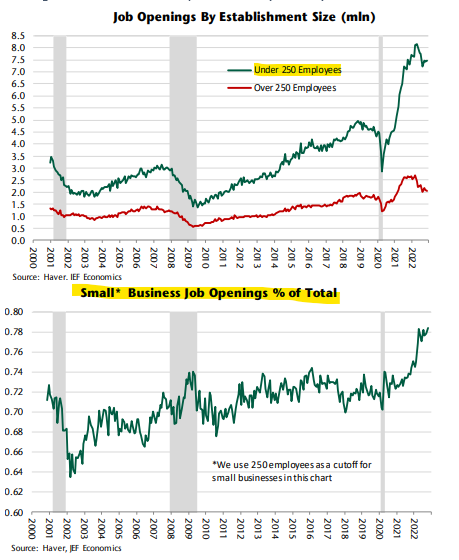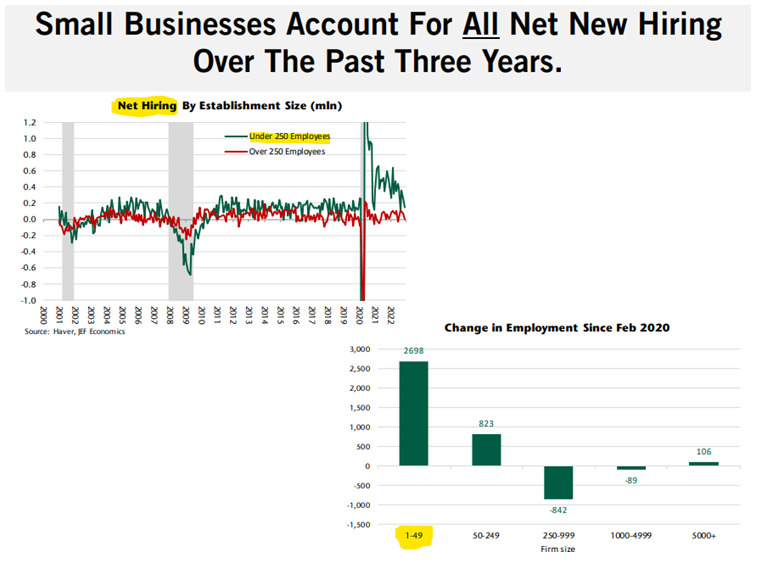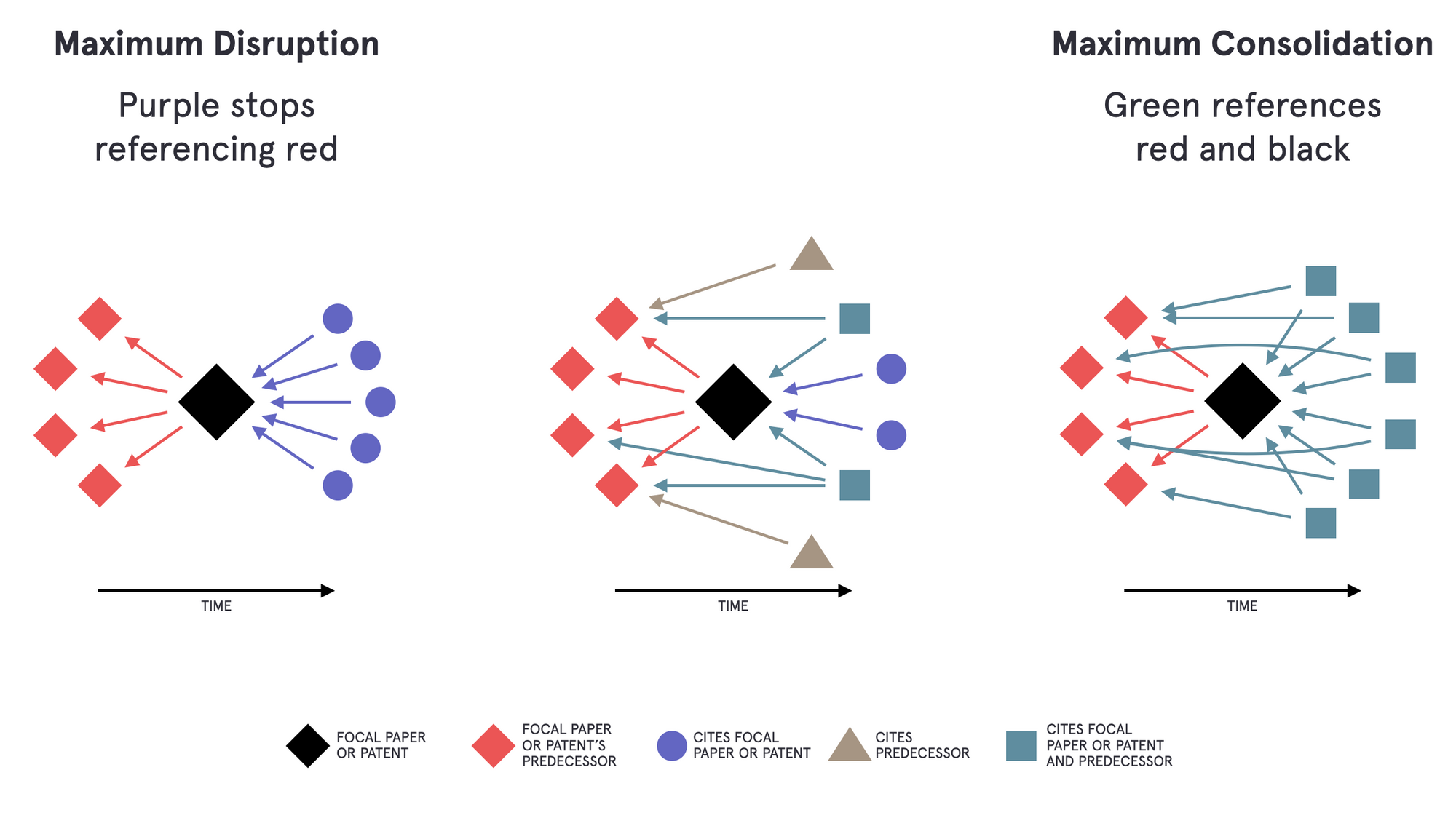Five Org Design Things N° 5
Excess management, Big-biz hiring stall, AI for organizing, Issues at Salesforce, and my thoughts on carve-outs 'n' central services.

On Excess Management, from 2016

Here’s the arithmetic. According to our analysis of occupational data provided by the U.S. Bureau of Labor Statistics, there were 23.8 million managers, first-line supervisors, and administrators in the American workforce in 2014. (This figure includes both the public and private sectors but does not include individuals in IT-related functions.) That works out to one manager and administrator for every 4.7 employees. Overall, managers and administrators made up 17.6% of the U.S. workforce and received nearly 30% of total compensation.
Gary Hamel goes on to cite a few case studies – Valve, W.L. Gore, Handelsbanken, GE Aviation – that suggest...
...t should be possible to double the ratio of employees to managers and administrators, from 4.7:1 to 10:1. Doing so would free up 12.5 million individuals for other work that is more creative and productive.
I've written about this a couple times: in 2020, about how we need stable, customer-focused teams; this week, about the transfer from individual leaders to teams. Each of these are core in improving this ratio. And while flattening can concentrate more power and compensation in the hands of fewer managers, it doesn't have to – especially if we move to team-based incentive models.
Which leads me to...
Big business has stopped hiring, small business hasn't


Via Shortsighted Capital and Michael Cata
Earlier this week, I wrote about declining levels of disruption in academic research and patents, which I believe is driven by org structures and approval processes:
- Larger teams are rewarded by "management," but are both less productive and disruptive, and
- Approvals are slow and getting slower, probably because of bad decision-making practices.
There's research to back this up in the post:

The graphs above also suggest that big business is catching on to the idea that they've got too many people for the work to go around – and a lot of that work is management between functional siloes. Even within marketing departments, we have seen that up to 70% of managerial time is spent on driving awareness for initiatives, and gaining alignment on what teams will do next.
Which leads me to...
AI will end organizing

First, they can automatically tag and link notes together with no manual work required. It doesn’t even require an LLM—there are less advanced, cheaper models that can do this out of the box today.
Second, they can enrich notes as you’re writing them and synthesize them into research reports, eliminating much of the need for tagging and linking in the first place.
Third, they can resurface key information from previous notes into a CoPilot-like experience for note-taking. This makes searching through old notes unnecessary and helps you bring to bear all of the information you’ve ever written down every time you tap a key.
This is specifically about organizing notes but I think you could extend most of it to organizing people and initiatives. The below tweet, via my friend Cullen, explains a lot:
I guess if you were able to upload your companies entire history of documentation, meetings, slack messages into a ChatGPT-style bot: someone should be able to ask the *organization* a question and get an informed answer back.
— jacob (@js_horne) January 6, 2023
e.g. “hey zora, what’s the context on XYZ”
Which is kinda related to...
There's something going on at Salesforce

A few things here.
- I do think the takes on Twitter about this situation have been good and funny – it's hard to manage big, high-growth businesses once the free growth engine is turned off! Set expectations. Create clear missions. Provide good boundaries between organizations. Don't be draconian on culture. Simple stuff, but hard to do well.
- It's bizarre to me that somehow Microsoft is getting the organizing + sales right and the product wrong, while Salesforce is getting the organizing + sales wrong and the product right. I'm sure there are plenty of counter-examples to this, but I'm getting this vibe.
- No rambling in front 47,000+ people. These sessions to be designed, orchestrated, and practiced.
Not entirely unrelated...
Carve-outs are gaining steam
As Rest of IPO Market Stalls, Corporate Carve-Outs Gain Steam – WSJ
The article highlights examples from JNJ and GE, but I think there's something else to consider as an organizational trend:
I've long thought that all “Central Services” like HR, Finance, Legal, Risk, etc. should be delivered through APIs to teams, the way that small businesses work with companies like Justworks or AWS, but...better, smarter, and more specific.
The idea is that each of the services that a company keeps inside its walls should be aiming to become businesses in their own right (profit centers, even?) with real customers, continual iteration, etc. This is both better for "the business" and better for the people working in those central services – it's much more engaging to be "building a product customers love" than to be "the global function that local can't stand dealing with."
And if a business doesn’t want to commit to this level of investment, that business should probably divest this activity to an outsourcing partner (like you do with Justworks or AWS).
Anyway, I think there's something really valuable in between completely standalone businesses/cultures and full-on matrix structure. Teams, duh.




Comments